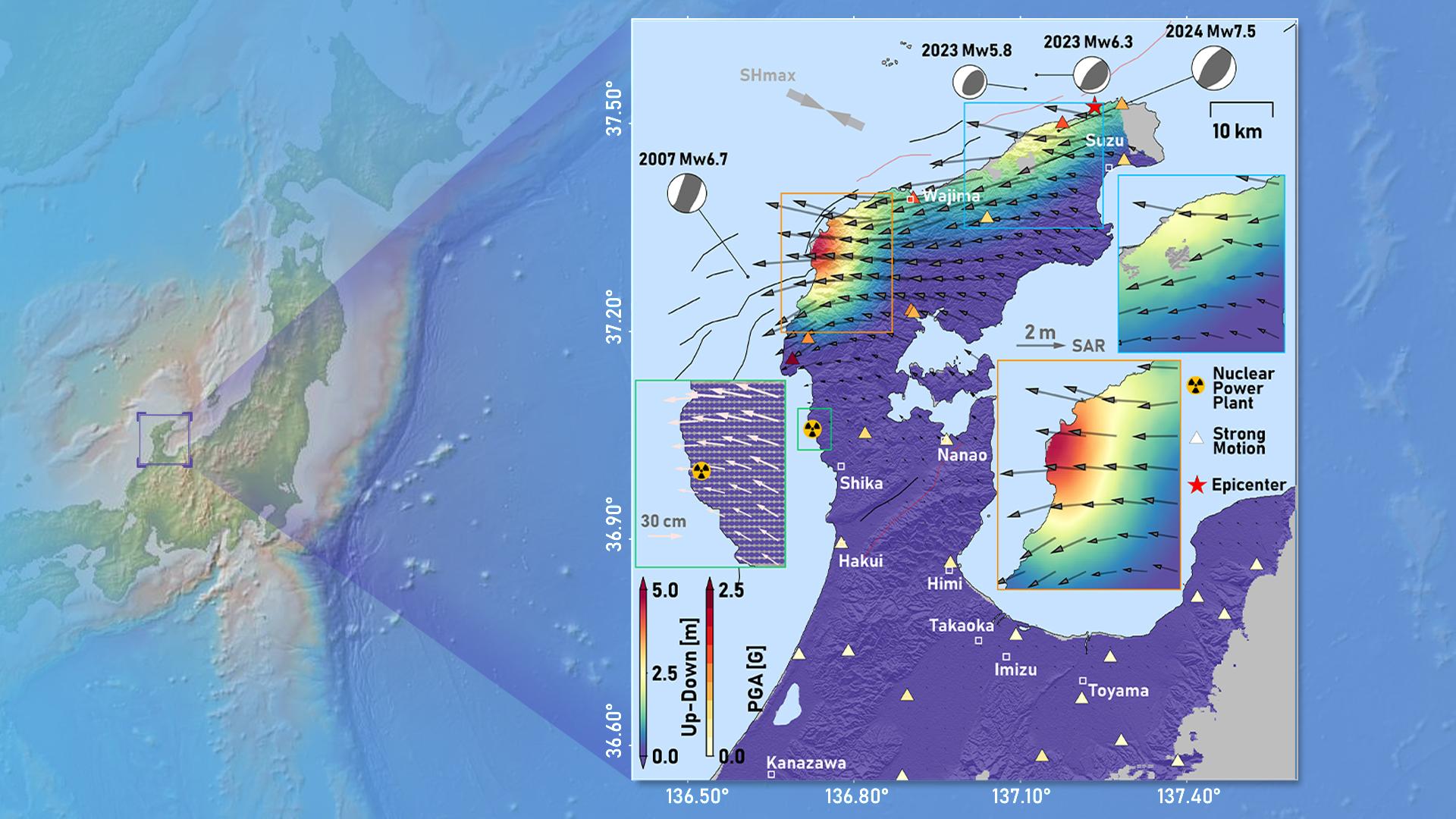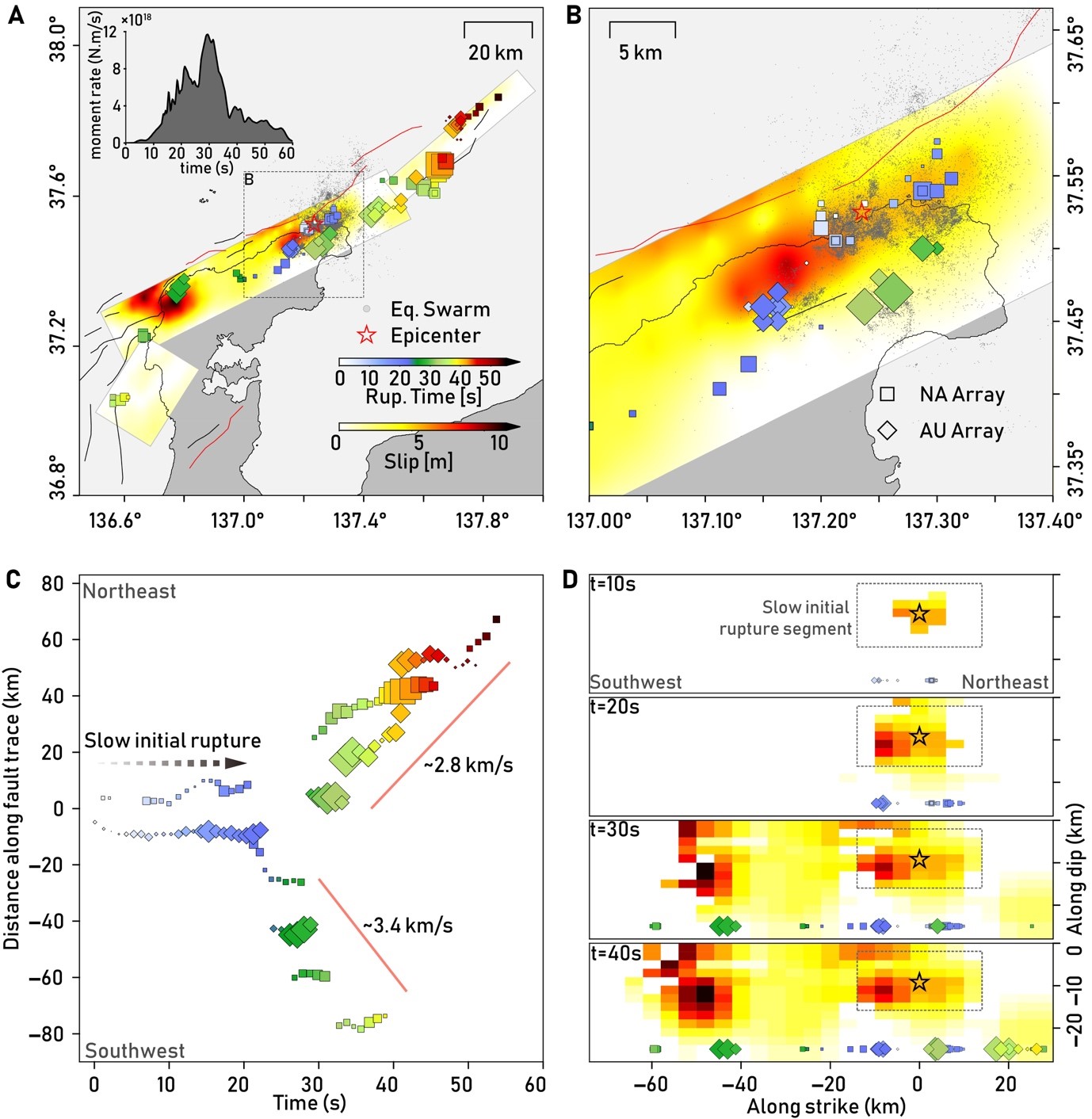Scientists provide fresh insights into rupture behavior of 2024 Noto Peninsula earthquake
2024-07-10
Earthquakes are complex natural phenomena that pose significant risks to communities worldwide. The recent moment magnitude 7.5 earthquake that struck Japan’s Noto Peninsula on January 1, 2024, serves as a stark reminder of the destructive power of such events. This earthquake generated widespread devastation, including numerous landslides, a local tsunami, significant damage to infrastructure, and more than 200 casualties. It also revealed an intriguing rupture mode that has never been reported. Understanding the mechanisms behind the earthquake rupture is crucial for improving seismic hazard assessment and developing effective mitigation strategies.

Seismic deformation on the Noto Peninsula. The background color indicates vertical uplift, while the arrows depict the direction and magnitude of horizontal displacement. Triangles mark the locations of surface strong motion recorders, with their colors representing the maximum recorded surface acceleration.
Research conducted by Associate Professor Haipeng Luo from the Department of Earth and Space Sciences at the Southern University of Science and Technology (SUSTech), in collaboration with researchers from Nanyang Technological University, Singapore (NTU Singapore), the Key Laboratory of Deep Petroleum Intelligent Exploration and Development at the Institute of Geology and Geophysics, Chinese Academy of Sciences (IGGCAS), Earth Research Institute at the University of Tokyo, and Hohai University, has shed light on the unique characteristics of the Noto Peninsula earthquake. This study underscores the role of fluids in the slow initial rupture and complex propagation during this devastating earthquake.
Their work, entitled “Slow Rupture in a Fluid-rich Fault Zone Initiated the 2024 Mw 7.5 Noto Earthquake”, has been published in Science via First Release, one of the world’s top academic journals.
The study shows that the magnitude 7.5 earthquake that struck the Noto Peninsula in Central Japan was marked by an unusual rupture mode, characterized by a slow initial rupture lasting 15-20 seconds near the start location of the event, i.e., the hypocenter. This slow start was accompanied by intense high-frequency seismic radiation. “This new phenomenon can be due to a high degree of heterogeneity in fault properties within a fluid-rich fault zone”, said Haipeng.
The slow initial rupture grew into a devastating event. It highlights the potential impact of such complex rupture processes on earthquake early warning systems, emphasizing the need for advanced monitoring techniques in regions with similar fault characteristics. This study calls for more in-depth research on earthquake mechanisms and better preparedness and risk mitigation strategies for future seismic events.

Figure 1. Rupture behaviors of the Noto Earthquake in Japan. (a) Slip distribution (background color) on the earthquake fault and high-frequency energy sources (diamonds and squares). (b) Close-up of the initial rupture area. (c) Spatiotemporal diagram of high-frequency energy sources. (d) Rupture propagation during the first 40 seconds of the earthquake.
Dr. Zhangfeng Ma and Hongyu Zeng from NTU Singapore are the first authors of the paper. Associate Professor Haipeng Luo and Professor Shengji Wei are the corresponding authors. SUSTech is the co-corresponding unit of the paper.
Paper link: https://www.science.org/doi/10.1126/science.ado5143




